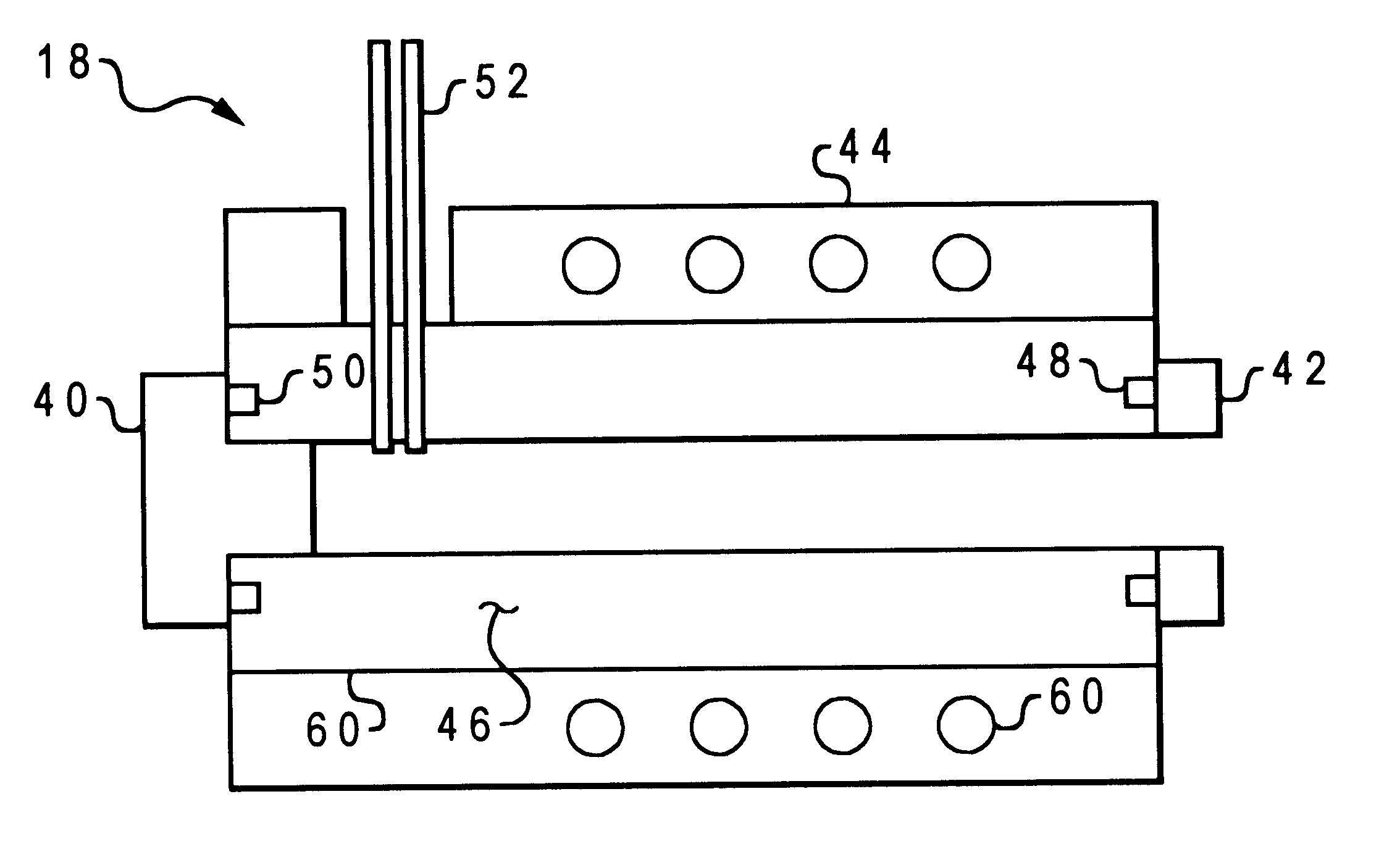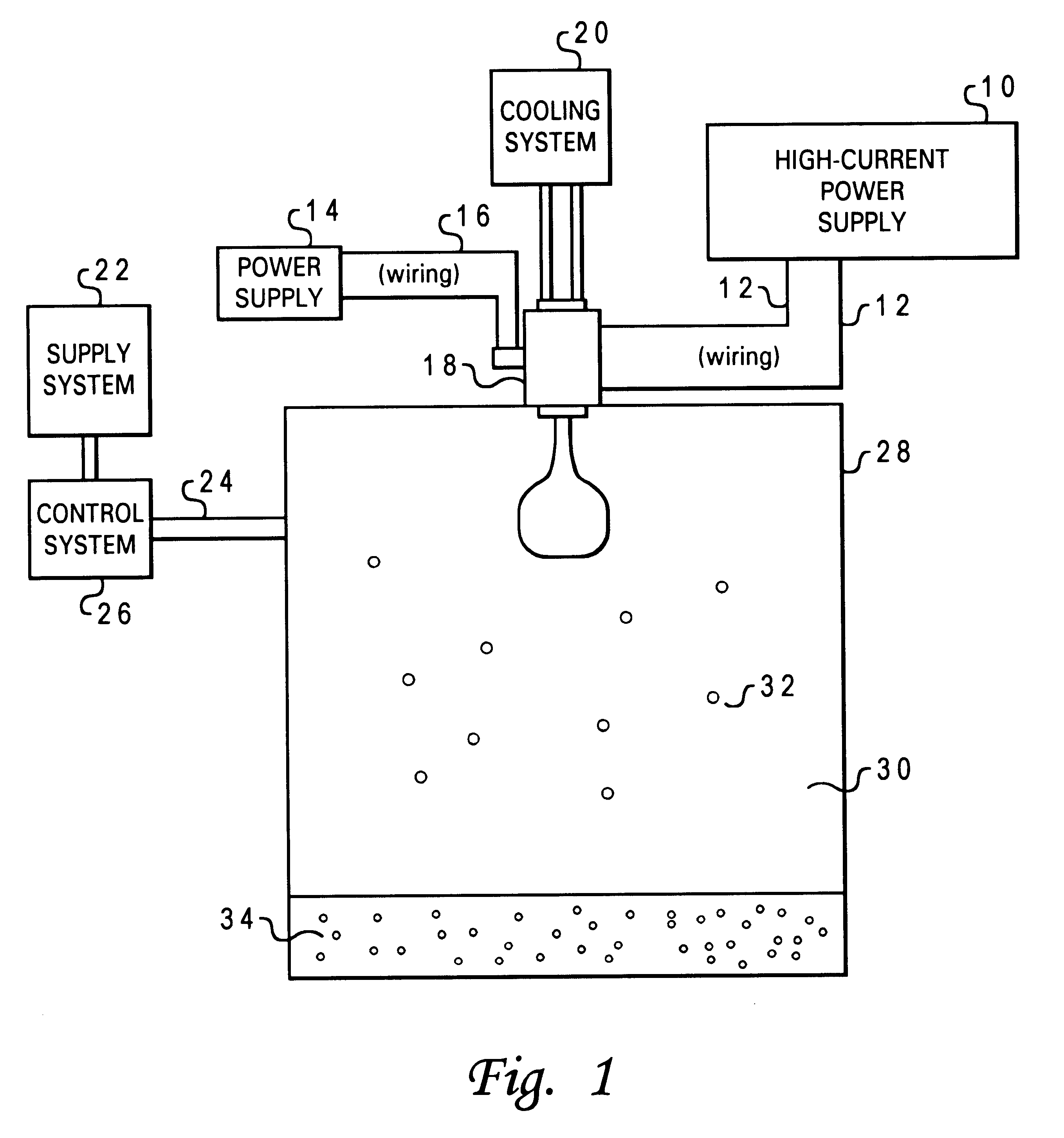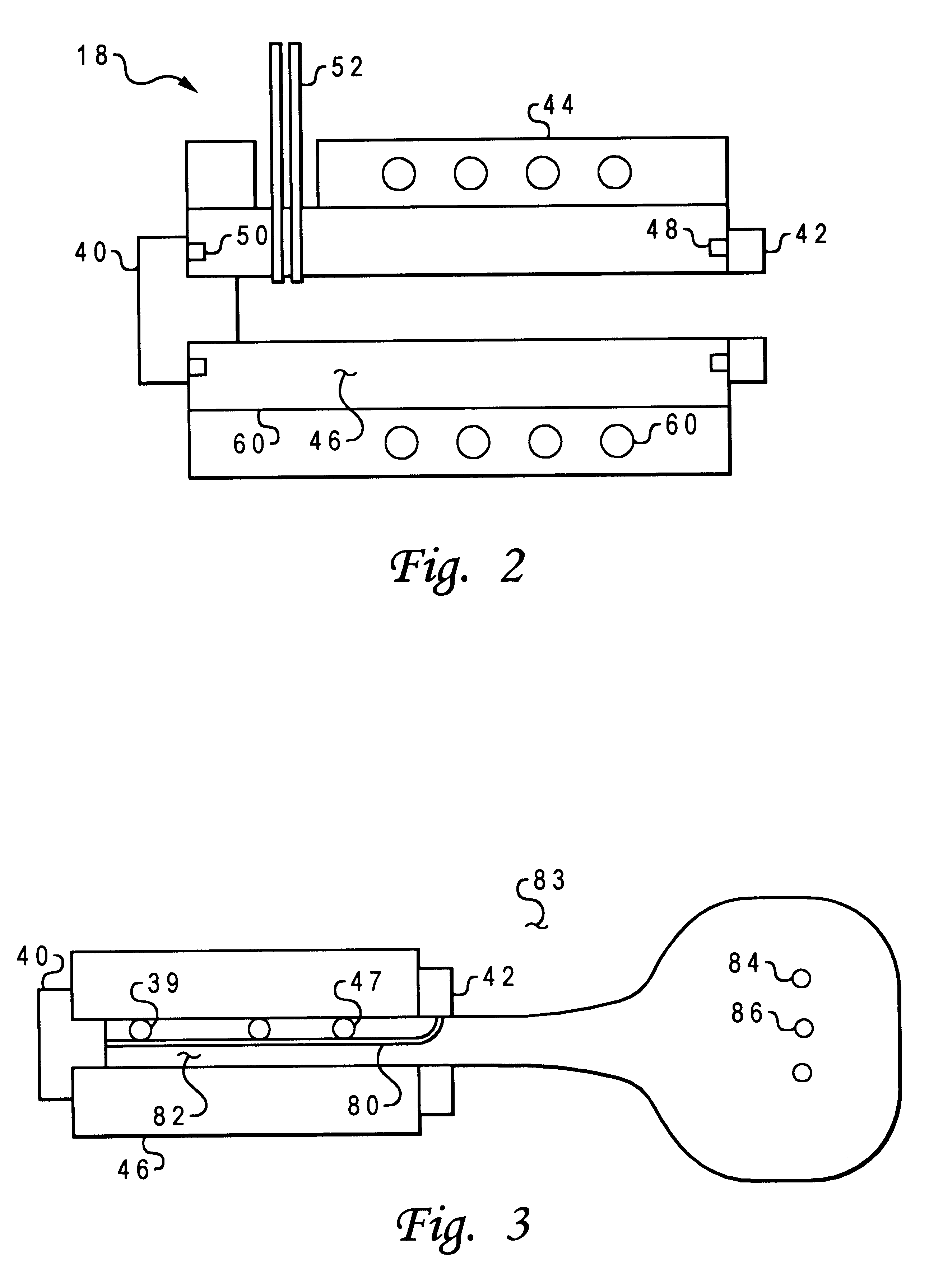Method and apparatus for direct electrothermal-physical conversion of ceramic into nanopowder
a technology of nanopowder and electrothermal-physical conversion, which is applied in the field of method and system for the production of submicron materials, can solve the problems of inconsistent shape and size of particles, polluted materials, and suitable for high-performance applications
- Summary
- Abstract
- Description
- Claims
- Application Information
AI Technical Summary
Benefits of technology
Problems solved by technology
Method used
Image
Examples
Embodiment Construction
With reference now to the figures, and in particular with reference to FIG. 1, there is depicted one embodiment 8 of an electrothermal system for synthesizing ceramic nanopowders constructed in accordance with the present invention. System 8 is generally comprised of a high-current electrical power supply 10 with heavy-duty wiring 12 for conducting an energetic current pulse, an arc initiator power supply 14 with wiring 16, a ceramic electrothermal gun (electrogun) 18 with a cooling system 20, a reactor atmosphere supply system 22 with a supply pipe 24 and atmosphere control system 26, and a reactor vessel 28 having a reactor atmosphere 30 illustrated with suspended nanoparticles 32, and a layer of settled nanopowder 34 on the floor of the vessel. As explained further below, power supply 10 provides pulsed current to electrogun 18 in concert with initiation of an arc by initiator power supply 14, which results in activation of electrogun 18. A plasma stream from electrogun 18 entrai...
PUM
| Property | Measurement | Unit |
|---|---|---|
| Power | aaaaa | aaaaa |
| Composition | aaaaa | aaaaa |
| Electric potential / voltage | aaaaa | aaaaa |
Abstract
Description
Claims
Application Information
 Login to View More
Login to View More - R&D
- Intellectual Property
- Life Sciences
- Materials
- Tech Scout
- Unparalleled Data Quality
- Higher Quality Content
- 60% Fewer Hallucinations
Browse by: Latest US Patents, China's latest patents, Technical Efficacy Thesaurus, Application Domain, Technology Topic, Popular Technical Reports.
© 2025 PatSnap. All rights reserved.Legal|Privacy policy|Modern Slavery Act Transparency Statement|Sitemap|About US| Contact US: help@patsnap.com



